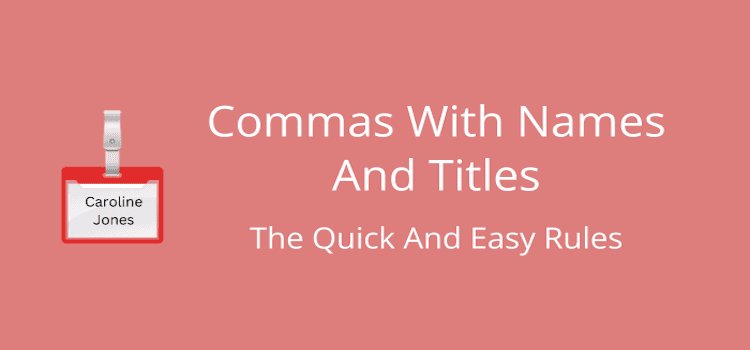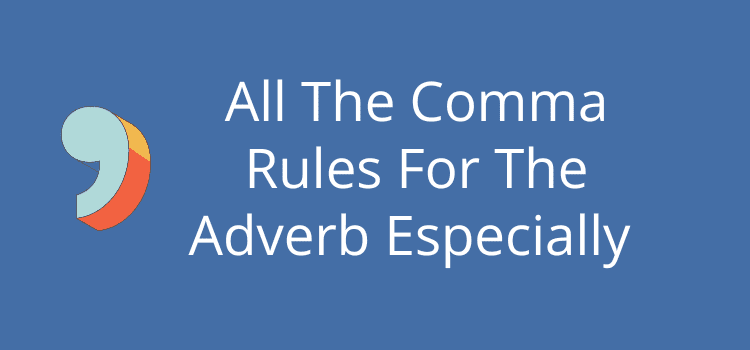
Knowing when to use commas with names and titles in sentences is easy once you know two simple grammar rules.
1. If a name or title is essential to the meaning of a sentence, and you can’t remove it, you don’t use commas.
2. However, if the name is not essential, and you can remove it without changing the meaning of the sentence, you wrap the name in commas.
When you apply these two rules to your writing, you will never go wrong.
Quick examples of no commas with names
The punctuation rules for names are similar to defining and non-defining clauses.
When a name is essential or defining, you don’t use commas.
A primary example is when the name is the subject.
Caroline is the head of our technical support team.
In this case, you don’t use a comma.
You can ask Caroline for help with Excel spreadsheets. She’s an expert.
In the example above, removing the name from the sentence is impossible, so there are no commas.
It doesn’t matter where the name occurs in a sentence. If it can’t be removed, you don’t add any commas.
If you need any help, the best person to ask is Caroline.
It’s that easy. You don’t use commas if the name is essential and can’t be removed from a sentence.
When to use two commas
When a name is grammatically non-essential, you can remove it and retain the meaning of a sentence.
In other words, the name adds extra information, so you need two commas to separate the additional information.
The head of our technical support team, Caroline Mason, is the best person to ask if you have a technical issue.
When you remove the name, the sentence remains grammatically intact.
The head of our technical support team is the best person to ask if you have a technical issue.
This version is certainly less informative than the first, but it is correct.
The same rule applies to titles.
My favorite book, The Hitchhikers Guide to the Galaxy, was written by Douglas Adams.
Again, if I remove the title, the sentence still makes sense.
My favorite book was written by Douglas Adams.
When a name is one of many
You don’t need to use commas if you use a name to describe the only person relevant to a sentence.
In the example below, it is a nominative absolute phrase to introduce Caroline.
My colleague Caroline can help you.
However, when the name is one of two or more possibilities, you need to wrap it in commas.
One of my colleagues, Caroline, can help you.
The sentence means that Caroline is only one choice of many.
Using one comma before a name
This only occurs when a name or title is at the end of a sentence and is non-essential information, so a comma is necessary.
I was very happy with the help I received from the head of the support team, Caroline.
You can see that the name could be easily removed.
But because it is at the end of the sentence, you can’t use a second comma.
When to use a single comma after a name
When a name is at the end of an introductory clause or phrase, it may need a comma.
This is a general punctuation rule and not directly related to names or titles.
I tried to contact Caroline, but she was in a meeting all afternoon.
Comma use with suffixes
One last issue occasionally occurs when a name has a suffix like Jr., Sn., or a number.
According to MLA Style, there is no comma before a number, but there is before a suffix.
Queen Elizabeth II
Harry Connick, Jr.
For a name with a suffix abbreviation, a comma follows the period (full stop) when used in a sentence.
The singer Harry Connick, Jr., was born in 1967.
Summary
Most grammar rules are open to variations, interpretations, and exceptions.
In this case, you might find that style guides may differ slightly.
But in general, the two basic rules apply.
1. You don’t use commas with names and titles when they are essential information.
2. You use commas with names and titles that are non-essential information and can be removed from a sentence.
If you follow these two simple rules, you will get your punctuation and grammar right every time.
Related Reading: Comma Before Such As For Nonrestrictive Clauses
Share This Article


